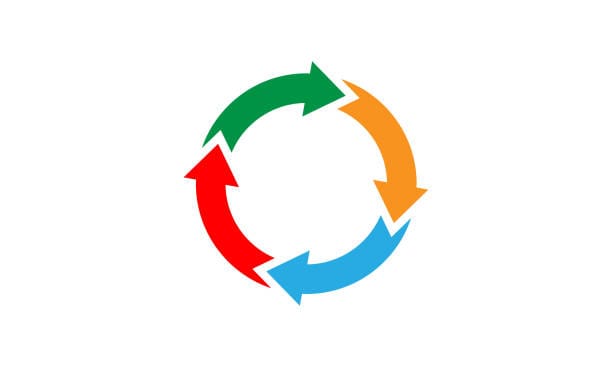The 5-Point QE Health Check

When was the last time you took your Quality Engineering pulse?
Not your CI/CD metrics. Not the number of test cases in Jira.
I’m talking about an honest, five-minute check on whether your QE practice is healthy; or slowly bleeding out behind the scenes.
Too often, teams equate “health” with “we ship” or “the tests are green.”
But that’s like judging your fitness by whether you can climb one flight of stairs without collapsing. It’s a very low bar.
In my work building and scaling QE teams, I’ve found that the strongest engineering orgs share five non-negotiable traits. And the teams that lack them? They live in constant firefighting mode, wondering why quality problems keep sneaking into production.
This is your 5-Point QE Health Check; five questions you can ask today to find out whether you’re building resilience… or just getting lucky.
1. Traceability: Can you connect every feature to its tests; in both directions?
The question: If I gave you a single Jira story, could you tell me which automated and manual tests cover it? And if I picked a test at random, could you tell me which requirement it validates?
If the answer to either is “no” or “not without digging through five spreadsheets,” you have a traceability gap.
Why it matters:
- Traceability isn’t just compliance theatre. It’s your early-warning system for coverage gaps.
- Without it, you can’t measure risk before a release; you’re guessing.
- It makes onboarding new testers and developers painfully slow.
What good looks like:
- Your test management tool (Allure TestOps, Zephyr, Xray, etc.) has a clear link between requirements and test cases.
- Every automation run feeds results back into that tool, so you can see pass/fail status per requirement.
- Coverage reports are a click away, not a week-long data-gathering exercise.
Health check score:
✅ Green: 90%+ requirements have linked tests (manual + automated) with results visible in one place.
⚠️ Yellow: Some linking exists, but it’s inconsistent or manual.
❌ Red: You rely on tribal knowledge to know what’s tested.
2. Automation Coverage: Is your automation focused where it matters most?
The question: Do your automated tests cover your highest-risk, highest-value user flows… or just the easiest things to automate?
A lot of teams hit “automation coverage” goals by filling the repo with low-impact UI scripts; the ones that pass in staging but break for trivial reasons in CI. This creates automation theatre: lots of test files, little actual safety net.
Why it matters:
- QE’s job isn’t to automate everything. It’s to protect the business from expensive failures.
- High-value flows (e.g., payment processing, medical record retrieval, core API calls) should be bulletproof.
- Chasing vanity coverage metrics leads to bloated pipelines and brittle tests.
What good looks like:
- A risk-based automation strategy: each test exists because it guards something important.
- Your CI run fails fast; you’re not running every possible check before telling devs there’s a problem.
- Tests are tagged by priority and can be run selectively by risk level or feature set.
Health check score:
✅ Green: 70%+ of your automation time is spent on high-value, high-risk flows.
⚠️ Yellow: Coverage is broad but not deep in critical areas.
❌ Red: You don’t know which tests actually map to high-risk features.
3. CI/CD Quality Gates: Does bad code ever get through without you knowing?
The question: If a critical defect is introduced, will it be caught before it reaches production; without relying on a human remembering to check?
If your CI/CD pipeline isn’t enforcing quality gates, you’re relying on good intentions instead of process.
Why it matters:
- CI/CD isn’t just about deployment speed. It’s about preventing regressions at the source.
- Without gates, you’ll either ship bugs or slow down every release with a last-minute scramble.
- Human gatekeeping doesn’t scale; people get tired, distracted, or overruled.
What good looks like:
- Automated test suites run on every pull request and block merges if critical checks fail.
- Smoke tests run automatically in staging and must pass before a production deploy is approved.
- Static analysis, security scans, and performance benchmarks are baked into the pipeline.
Health check score:
✅ Green: You have enforceable, automated pass/fail criteria in CI for critical functionality.
⚠️ Yellow: Some checks run in CI but can be bypassed or ignored.
❌ Red: CI is advisory only; bad code can ship if someone decides to risk it.
4. Observability: Can you debug failures in minutes, not hours?
The question: When a test fails, do you know why; without rerunning it five times or digging through console logs?
A lot of teams have good automation but zero visibility into what’s happening when things go wrong. This turns every failure into a time-consuming investigation.
Why it matters:
- Debug speed is a direct multiplier on your team’s throughput.
- Without observability, you’re stuck in a loop: test fails → rerun → guess → rerun again.
- It’s also the difference between finding a root cause in staging and watching it hit production.
What good looks like:
- Test runs automatically capture screenshots, videos, network logs, and console output.
- Logs are centralized and searchable.
- Flaky tests are tracked and reported separately from genuine failures.
- You have alerting in Slack or Teams when key tests fail in CI.
Health check score:
✅ Green: You can pinpoint a failure’s root cause in under 15 minutes.
⚠️ Yellow: You can debug within hours but it requires too much manual digging.
❌ Red: Failures regularly get ignored because no one can figure them out quickly.
5. Quality Culture: Is quality owned by the whole team; or just QA?
The question: When a bug slips into production, does your team ask, “Why didn’t QA catch this?” or “Why didn’t we catch this?”
The healthiest teams see quality as a shared responsibility, not something to throw over the wall to testers.
Why it matters:
- Blame silos kill collaboration and innovation.
- Shared ownership is the only way to shift left; involving QA in design and development decisions instead of just testing the output.
- A “quality is everyone’s job” culture leads to fewer defects, faster releases, and happier customers.
What good looks like:
- Developers write unit tests and contribute to integration tests.
- QA participates in architecture reviews and sprint planning.
- Bugs are treated as team learning opportunities, not individual failures.
Health check score:
✅ Green: Developers, testers, and product managers all see themselves as quality owners.
⚠️ Yellow: Some collaboration exists, but QA still feels like the “catcher” at the end.
❌ Red: Quality discussions only happen after something breaks.
How to Use This Health Check
Here’s how to make this more than just an interesting read:
- Run it as a retro exercise. Bring these five questions to your next sprint retrospective and have the team score themselves Green/Yellow/Red.
- Pick one focus area per quarter. Don’t try to fix everything at once; just move one Red to Yellow, or one Yellow to Green.
- Tie improvements to business outcomes. It’s easier to get buy-in if you connect better traceability to fewer missed features, or improved CI gates to reduced production incidents.
- Repeat every 6 months. QE health isn’t a one-time project; it’s ongoing maintenance.
The Bottom Line
The 5-Point QE Health Check isn’t a maturity model or a compliance audit. It’s a mirror.
If your reflection comes back with more Yellows and Reds than Greens, you’re not doomed; you’re just flying without a full set of instruments. And in modern software delivery, that’s a risk you don’t have to take.
Healthy QE isn’t about perfection. It’s about visibility, focus, and shared accountability.
Get those right, and your team stops guessing about quality; you’ll know.
👉 Want more posts like this? Subscribe and get the next one straight to your inbox. Subscribe to the Blog or Follow me on LinkedIn



Comments ()